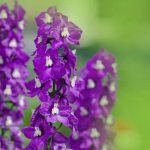Are you struggling to come up with landscape ideas for shady areas in your outdoor space? Designing for shade comes with its own set of challenges and considerations, but with the right approach, you can create a beautiful and thriving landscape in even the shadiest of spaces. In this article, we will explore how to embrace the unique characteristics of shady landscapes and uncover innovative solutions for designing a stunning outdoor environment.
One of the main challenges of working with shady landscapes is understanding the limitations and considerations that come with these spaces. From plant selection to optimizing natural light exposure, there are specific factors to keep in mind when designing for shade. We will delve into these unique considerations and provide insights into how you can work with, rather than against, the shade in your landscape design.
When it comes to selecting plants for shade, it’s essential to choose species that thrive in low-light conditions. In the following section, we will provide a comprehensive guide to the best shade-loving plants and offer expert tips on how to incorporate them into your landscape. Whether you’re looking for lush foliage or vibrant blooms, there are plenty of options for creating a visually stunning garden in shady areas.
Selecting the Right Plants for Shade
When it comes to landscaping shady areas, selecting the right plants is crucial for creating a thriving and visually appealing outdoor space. Fortunately, there are numerous shade-loving plants that can thrive in low-light conditions and add beauty to your landscape. Here are some top picks for shade-loving plants to consider incorporating into your shady landscape:
- Hostas: These versatile plants come in a wide range of sizes, shapes, and colors, making them perfect for adding visual interest to shady areas.
- Ferns: With their delicate fronds and vibrant green foliage, ferns are an excellent choice for adding texture and lushness to shady spots.
- Astilbes: Known for their feathery plumes of flowers in shades of pink, red, white, and purple, astilbes can bring a pop of color to shady garden beds.
- Hydrangeas: These popular flowering shrubs thrive in partial to full shade and offer stunning blooms in hues of blue, pink, white, and purple.
- Caladiums: With their bold and colorful foliage, caladiums can brighten up shady areas with their striking leaves in shades of red, pink, green, and white.
Incorporating these shade-loving plants into your landscape can enhance the beauty of your shady areas while also providing a habitat for beneficial wildlife such as butterflies and hummingbirds. When choosing plants for shaded spaces, it’s important to consider factors such as soil conditions, moisture levels, and mature plant size to ensure successful growth and long-term enjoyment.
In addition to these top picks for shade-loving plants, incorporating ground covers such as periwinkle (Vinca minor) or sweet woodruff (Galium odoratum) can help fill in bare spots and provide a lush carpet of greenery in shaded areas. By carefully selecting the right plants for shade based on your specific landscape requirements and preferences, you can create a stunning garden that thrives in spite of limited light conditions.
Creative Hardscaping Solutions
When it comes to landscaping in shady areas, one of the most creative and effective solutions is to utilize hardscaping features. Rocks, pathways, and structures can all play a key role in enhancing the beauty and functionality of a shady landscape. These elements not only add visual interest but also help mitigate some of the challenges presented by limited sunlight.
Rocks can be used in a variety of ways in shady landscapes. From creating natural borders for garden beds to incorporating them into rock gardens, their versatility makes them an excellent choice for adding texture and dimension to a shaded outdoor space. Additionally, strategically placed rocks can help retain moisture in the soil, which is especially beneficial for shade-loving plants.
Pathways are another important hardscaping feature that can greatly enhance the usability of a shady landscape. By carefully planning out pathways using materials such as gravel, flagstone, or pavers, you can create visually appealing walkways that lead visitors through the space while minimizing damage to delicate shade plants.
Structures like pergolas, arbors, and trellises offer both practical and aesthetic benefits in shady areas. They can provide support for climbing plants that thrive in low light conditions while also creating visually striking focal points in the landscape. Additionally, these structures can help define different areas within the shaded space, adding depth and interest to the overall design.
| Hardscaping Feature | Benefits |
|---|---|
| Rocks | Add texture and dimension to shade landscapes; help retain moisture in soil |
| Pathways | Create visually appealing walkways; minimize damage to delicate shade plants |
| Structures (pergolas, arbors, trellises) | Provide support for climbing plants; create visually striking focal points |
Designing for Visual Interest
When designing a landscape for a shady area, it’s important to think about how to create visual interest and make the space visually stunning. One way to achieve this is by incorporating a variety of plants with different colors, textures, and heights. Consider including shade-loving plants such as ferns, hostas, and astilbes in varying shades of green and purple to add depth and dimension to the landscape.
In addition to plants, incorporating hardscaping elements can also contribute to visual interest in shady areas. Think about adding features like decorative rocks, winding pathways, or strategically placed structures such as pergolas or arbors. These elements not only add texture and dimension but can also provide focal points that draw the eye and create visual appeal in the shaded landscape.
Another important consideration when designing for visual interest in shady areas is creating contrast. Utilize light-colored plants or hardscaping materials that will stand out against the dark backdrop of a shady area, drawing attention and adding vibrancy to the space.
| Plants | Hardscaping Elements |
|---|---|
| Ferns | Decorative Rocks |
| Hostas | Winding Pathways |
| Astilbes | Pergolas or Arbors |
Maximizing Natural Light
When it comes to landscaping in shady areas, maximizing natural light exposure is essential for the health and vitality of your plants. However, it can also significantly improve the overall aesthetic of the space. With some strategic planning and thoughtful design choices, you can make the most of whatever natural light is available in your shady landscape.
Strategic Plant Placement
One effective way to optimize natural light in shady areas is by strategically placing plants to make the most of any sunlight that filters through. Consider the sun’s path throughout the day and position light-loving plants where they will receive as much direct sunlight as possible. Additionally, using reflective materials like white gravel or stones can help bounce light back onto shaded plants.
Pruning and Trimming
Regular pruning and trimming of nearby trees or shrubs can help increase natural light exposure for plants growing underneath. By thinning out overhanging branches and removing any dead or diseased limbs, you can allow more sunlight to reach the ground below.
Use of Reflective Surfaces
Incorporating reflective surfaces into your shady landscape design can help bounce natural light around the space. Consider adding mirrors, metallic accents, or even glossy paint finishes on decorative elements to help brighten up dark corners and create a more dynamic play of light throughout your landscape.
By incorporating these strategies for optimizing natural light exposure in shady areas, you can create an environment that not only benefits your plants but also enhances the overall beauty of your landscape. Whether through strategic plant placement, regular maintenance, or creative use of reflective surfaces, maximizing natural light will undoubtedly elevate your shady outdoor space.
Embracing the Shade
When it comes to designing a landscape for shady areas, it’s essential to embrace the unique beauty that shade can offer rather than seeing it as a limitation. Understand that shade does not have to hinder your landscape design; instead, it can enhance and create a serene and peaceful environment. To achieve this, consider incorporating the following ideas into your shady landscape design:
- Selecting the Right Plants: Choose shade-loving plants that thrive in low-light conditions. Options such as hostas, ferns, azaleas, and hydrangeas are excellent choices for adding color and texture to shady areas. Additionally, incorporating different foliage shapes and sizes will help create visual interest in your landscape.
- Creative Hardscaping Solutions: Utilize features such as rocks, pathways, and structures to enhance the natural beauty of shade in your landscape. Consider adding a winding path made of natural stone or creating a seating area with an elegant pergola covered in climbing vines. These hardscaping elements not only add structure but also provide focal points that draw attention to the shaded areas of your landscape.
- Maximizing Natural Light: While shade is characteristic of certain areas in your yard, it’s important to maximize natural light exposure where possible. Trim back surrounding branches or thin out trees to allow dappled light to filter through. This will not only benefit certain plants but also create varying levels of light within the shaded space, contributing to an overall beautiful aesthetic.
Maintenance and Care Tips
Maintaining a healthy and thriving landscape in shady areas requires specific care and attention to ensure the best possible conditions for plants and features. With the right maintenance and care, you can create a stunning and vibrant outdoor space, even in the shadiest of areas.
Understanding Soil and Watering Needs
One key aspect of maintaining shady landscapes is understanding the unique soil and watering needs of shade-loving plants. Many shade-loving plants prefer moist, well-draining soil, so it’s important to monitor soil moisture levels regularly. Adding organic matter to the soil can help improve its ability to retain moisture, which is essential for the health of shade-loving plants.
Additionally, proper watering techniques are crucial for maintaining healthy plants in shady areas. In general, deep but infrequent watering is recommended to encourage deep root growth.
Pruning and Thinning
Regular pruning and thinning are essential maintenance tasks for shaded landscapes. Proper pruning helps increase air circulation, reduce disease risk, and maintain the overall health and appearance of shade-loving plants. Thinning out overcrowded areas can also help improve light penetration and promote better plant growth. It’s important to use sharp, clean tools when pruning shaded plants to avoid causing any unnecessary damage.
Pest Control and Disease Prevention
Pests and diseases can be particularly challenging in shady areas due to reduced air circulation and increased humidity. Regular monitoring for pests such as aphids, spider mites, and snails is important in maintaining a healthy environment for shade-loving plants. In addition to regular pest control measures, it’s also essential to practice good garden sanitation to prevent the spread of diseases in shady landscapes.
By following these maintenance tips tailored specifically for shady areas, you can cultivate a lush, beautiful landscape that thrives despite limited sunlight. With proper care and attention to detail, your shaded outdoor space can be just as vibrant and visually stunning as any sunny garden.
Showcasing Successful Shade Landscapes
In conclusion, designing a landscape for shady areas comes with its unique challenges and considerations. However, with the right knowledge and creativity, it is possible to create a stunning outdoor space that embraces the beauty of shade. By selecting the right shade-loving plants, incorporating creative hardscaping solutions, and maximizing natural light exposure, you can transform a shady area into a visually interesting and beautiful landscape.
One of the key aspects of designing for shady areas is choosing the right plants. With a comprehensive guide to shade-loving plants, you can create a lush and vibrant garden that thrives in low-light conditions. Additionally, integrating hardscaping features such as rocks, pathways, and structures can add visual interest and dimension to your shady landscape.
It’s important to embrace the uniqueness of shade and work with it rather than against it. By following expert maintenance and care tips for plants and features in shady areas, you can ensure that your landscape remains healthy and beautiful. Ultimately, by showcasing successful shade landscapes as real-life examples, you can gather inspiration and incorporate similar ideas into your own outdoor space, turning a once challenging area into a breathtaking oasis of greenery and tranquility.
Frequently Asked Questions
How Do You Landscape a Shady Yard?
When landscaping a shady yard, it’s important to choose plants that thrive in low light conditions. Look for shade-loving plants such as hostas, ferns, and coral bells.
You can also add interest with textured foliage and colorful flowers that can brighten up the space. Incorporating layers of different plant heights and ground covers can create depth and visual appeal in a shady yard.
What Can I Plant in Shady Corner of Yard?
If you have a shady corner in your yard, there are several plant options to consider. Some shade-tolerant plants that can thrive in this area include astilbes, hellebores, Japanese forest grass, and foamflower. These plants offer a variety of textures and colors to add interest to the corner of your yard while thriving in low light.
Which Plant Grows Best in Full Shade?
In full shade, there are several plants that grow best, such as periwinkle (Vinca minor), barrenwort (Epimedium), and foxglove (Digitalis). These plants are well-suited for areas where sunlight is limited and can add beauty and color to gardens with little direct sun exposure.
It’s important to consider the specific needs of each plant when choosing what to grow in full shade.

Welcome to my gardening blog! I am passionate about plants and enjoy sharing my knowledge and experiences with others. In this blog, I will write about everything related to gardening, from tips on how to get started to updates on my own garden projects.





